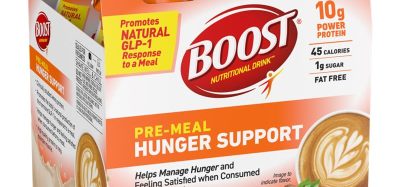The pros and cons of nutrient modelling systems
- Like
- Digg
- Del
- Tumblr
- VKontakte
- Buffer
- Love This
- Odnoklassniki
- Meneame
- Blogger
- Amazon
- Yahoo Mail
- Gmail
- AOL
- Newsvine
- HackerNews
- Evernote
- MySpace
- Mail.ru
- Viadeo
- Line
- Comments
- Yummly
- SMS
- Viber
- Telegram
- Subscribe
- Skype
- Facebook Messenger
- Kakao
- LiveJournal
- Yammer
- Edgar
- Fintel
- Mix
- Instapaper
- Copy Link
Posted: 6 March 2022 | Barbara Bray | No comments yet
Nutrition expert, Barbara Bray, discusses the upsides and drawbacks of nutrient profiling and why we should take a step back to examine the science.


As the world slowly emerges from the pandemic and countries are continuing to examine the toll on its citizens, the limelight on health and nutrition shines bright.
Food quality, in the context of human health and the environment, has rapidly become a focal point. In July, the Access to Nutrition Initiative (ATNI) published its 2021 Global Index, a report that assesses global food and beverage manufacturers and their impact on malnutrition. It found that as poverty has increased since the pandemic, the inevitable consequence is that obesity- and diet-related disease is rising.
The emphasis on food manufacturers to make accessible, affordable healthy food has also increased. There is a huge need for consumers on low incomes with less access to nutritious food to be prioritised by the food industry, which has a significant role to play in making this possible.
Since 2018, there has been some progress; however, average scores in the ATI Global Index ranking have not improved. As such, the industry as a whole must increase its efforts to encourage healthier diets for all.Currently, from the list of 25 companies assessed in the Global Index, 13 had an improved score in nutrition governance; nine had improved the healthiness of their products at portfolio level; 14 had introduced a company-specific nutrient profiling model; and nine had committed – where using food fortification – to follow international guidance set out by Codex, the World Health Organization (WHO) and the Food and Agriculture Organization of the United Nations (FAO) to ensure clear health benefits are delivered.
Nutrient profiling models
The UK Government is introducing new regulations in October 2022 to restrict the promotion of foods high in salt, fat and sugar (HFSS) with specific restrictions on location within physical stores and online and volume price restrictions. The aim is to help improve people’s diets and reduce children’s sugar intakes. The restrictions apply to prepacked food and drink high in fat, salt, sugar, as defined in the 2004/2005 nutrient profiling model.
The benefits of nutrient profiles
The UK Food Standards Agency (FSA) created the nutrient profiling model to use as a tool to separate foods high in fat, saturated fat, salt and sugar. The objective was to assist Ofcom in regulating the advertising of food aimed at children and to help food manufacturers know what parameters to work within when formulating products. The UK is not alone in creating such a model; the WHO, numerous national governments and multi-national food companies have all created their own guidelines. The models vary in design and format, with some applying to categories and others across all foods, and some using a scoring system.
Nutrient profiles can act as handrails for product development in the food industry; more nuanced than a traffic light system, they can also be used to motivate consumers to make healthier choices. Moreover, such profiles can facilitate policy decision-making in public health nutrition; for example, labelling, taxation and marketing to children.
Yet people consume foods, not nutrients, so it is helpful to view food or a meal as more than just a set of nutrients that impact our health. Some weight-loss diets have assigned a negative connotation to certain nutrients, such as low-fat or low-carbohydrate diets. This can create a view that a specific nutrient is bad, regardless of the role it plays when foods containing that nutrient are consumed as part of a healthy, balanced diet.
Nutrient profiles can act as handrails for product development in the food industry.
For people with a poor relationship with food, the negative messaging regarding certain nutrients can serve to justify extreme behaviours such as complete avoidance. A responsible dialogue with consumers about the nutritional quality of their food should not label foods as ‘good’ or ‘bad’, a guilty pleasure or as ‘virtuous’. The traffic light system used in the UK has been helpful to food manufacturers, enabling them to highlight salt reduction or calorie reduction to consumers, for example, but stopping short of signalling whether the product is healthy or not.
The rise of Veganuary highlighted this issue to me. During a nutrition review of vegan pizzas, I realised that the product range had scraped into the amber traffic light for saturated fat and salt and energy. In theory, this is an acceptable meal because it’s not high in those nutrients; however, the range did not provide enough vegetables to make a claim of one of your five a day. Products like these have been able to gain a health halo for not being high in certain ‘bad’ nutrients, when really they are low in the ingredients that we should be eating more of, such as vegetables.
A move to using nutrient profiling can help food manufacturers look at positive nutrition and the overall value that a food adds to a person’s diet. Accurate communication of the score enables those interested in improving their diet to make an informed choice where they can. At a country level, the use of a nutrient profiling model means policymakers are able to make a decision on taxation, labelling and marketing as in the case for HFSS regulations.
The disadvantages of nutrient profiling
Like anything, there are always drawbacks. For example, nutrition profiles are aimed at the general population and not applicable to specific groups; they can make a food seem very good or very bad; and it can be difficult to identify which nutrients are positive depending on the type of model used.


Some products can gain a health halo for being low in one ingredient, yet may not contain all the nutrients needed to be classed as a healthy meal
The paper published by the group at Tufts University1 (where the Food Compass Nutrient Profiling System (NPS) was developed) points out that there is a range of limitations associated with the use of nutrient profiling systems. The WHO developed an NPS for Europe in 2015 and from the three models considered from the UK, Denmark and Norway, the latter two were taken forward as a base for the new one. The key reason for dropping the UK model was that it was based on a scoring system that’s more difficult to adapt and modify, particularly where foods from a geographical region rather than just one country need to be added. Category-specific models are more flexible.
As mentioned, the scoring system models can make a food look very good or very bad. This is problematic for communicating the message about moderation, and it also presents a barrier for people who fall into specific groups and may need to eat foods high in energy or fat due to frailty and age-related disorders. Furthermore, it facilitates poor relationships with food and eating disorders by placing a negative focus on specific nutrients. The scoring system can also make it more difficult to know which nutrients are positive, which defeats the purpose of encouraging people to make informed choices.
Private sector
Food companies are not totally reliant on government policy and non-government organisation recommendations to guide their strategies on positive nutrition. In fact, IKEA2 recently announced that it had created an NPS based on key nutrients that impact on health, including energy (kcal), fat, sugars, salt and fibre. The company now has a standard to base its targets on. The aim is to make 80 percent of main meals healthier by 2025.
Retailers such as Tesco use the UK nutrient profiling model and recent pressure from charity ShareAction shows that the focus is on businesses to improve sales of healthy food and that a standard should be used to measure this achievement.
The recent launch of the Tufts Food Compass NPS may encourage more organisations in the private sector to review their current models and see if this one offers them the opportunity to be more constructive with product development. The Food Compass is a validated tool that scores 54 attributes across nine health-relevant domains including vitamins, additives and processing, for example. The nine domains are then summarised in a single score from one to 100 where raspberries and tuna salad top the list and products such as instant noodle soup and cheeseburgers are at the bottom. There may well be foods that do not score favourably on this system; however, with the range of domains covered, manufacturers have ample opportunity to reformulate to make improvements.
Multidisciplinary approach to solving nutrition problems
Focusing on NPS is not the full story. In my work as a nutrition consultant, I collaborate with colleagues to run a workshop called SCOUT where we help businesses find solutions to food problems. Developed with fellow nutritionist Dr Margaret Ashwell, we work with clients to define the question they would like to answer, then invite a group of experts from different disciplines to brainstorm ideas.
We applied the process earlier this year with a food product that came under the new HFSS guidelines and identified a range of initiatives that could be explored despite the fact that the NPS worked against it. There are some products which are healthier snacks yet are penalised by the scoring system.
A multi-disciplinary approach to nutrition and food problems helps view the science in the context of the ethics, economics and environment.
About the author
Barbara Bray is a PhD researcher in Nutrition at Queen’s University Belfast. She has been a TEDx speaker and is director of her own consultancy business, Alo Solutions Ltd, driving and delivering food safety in food supply chains and developing sustainable nutrition strategies for food businesses. She is also Co-Founder of the multi-disciplinary platform, Healthy and Sustainable Food, and a director of the Oxford Farming Conference. She is a member of the food and nutrition group at the Institute of Food Science and Technology (IFST) and a trustee of the Nutrition Society. She speaks at food and agriculture events and has represented the Private Sector Mechanism in speeches at the UN Committee for Food Security in Rome. Prior to consultancy, Barbara worked in the Ugandan agri-business sector after graduation and then spent 14 years in the chilled foods sector in the UK and France. Her roles covered food procurement, technical innovation and implementation of food safety systems. Barbara was runner-up in 2019 and 2020 for the Freelance Nutritionist of the Year awarded by the Caroline Walker Trust; and in 2019 was awarded an MBE for services to food nutrition. Her latest venture is SCOUT for solutions – a collaborative problem-solving workshop designed to help SMEs in the agri-food sector find new approaches to tackle food and nutrition challenges.
References
- www.finut.org/wp-content/uploads/2017/02/Nutrient_Profiling_Scientific_Aims_versus_Actual_Impact…
- https://about.ikea.com/Newsroom/2021/09/22/IKEA-Food-Nutrition-Profiling-System
You may also like:
Issue
Related topics
Clean Label, Health & Nutrition, Packaging & Labelling, Regulation & Legislation









